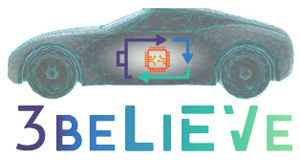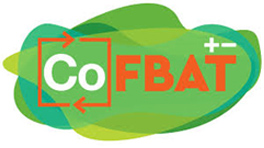
Key informations
- https://safelimove.eu/
Project description
Transport is responsible for around a quarter of EU greenhouse gas (GHG) emissions, and more than two thirds of transport-related GHG emissions are from road transport. Countries around the world are betting on EVs to meet sustainability targets. Battery cells are considered as the heart of EVs, and currently EU OEMs import around 90% of the battery cells from Asian companies.
New materials and processes are needed if the EU wants to catch up with Asian battery manufacturers. SAFELiMOVE will gather key European actors in the battery sector, from industrial materials producers, to R&D centers and automotive industry, covering the complete knowledge and value chain. SAFELiMOVE will not only strengthen the R&D in the energy and automotive sectors but especially the European industry in these fields. SAFELiMOVE project aims to support a market-driven disruptive technology change towards high energy density batteries (450 Wh/kg or 1200 Wh/L) and improved safety in a cost-effective manner. SAFELiMOVE delivers innovations in five main technology areas: development of nickel-rich layered oxide cathode materials; high specific capacity, lithium metal anode materials; advanced hybrid ceramic-electrolyte with improved ion conductivity at room temperature; interface adoption for effective Li transport by surface modification and/or over-coatings, and knowhow creation for the development of scale up production of all-solid-state batteries.
By higher energy density batteries towards 450 Wh/kg, faster charging and longer cycle life, SAFELiMOVE aims to meet future battery requirements for EVs. Thus, the range of EVs will be extended and the electro-mobility and decarbonization will be further pushed forward with impact in climate change scenarios.
Avesta's role
- Protective layer development for lithium metal anode
- Cell testing and interfacial analysis
- Cost model development
- Safety & Battery Postmortem Analysis
- Cell design and pressure optimizations
- Multiscale multiphysics modeling
- Electrothermal modeling
A few more projects
-

Gigagreen
European project Read moreGIGAGREEN proposes a structured research plan to develop and scale up novel electrode and cell component manufacturing processes that follow a Design to Manufacture approach in line with Europe’s strategic goal of becoming a global leader in the Li-ion battery value chain. This means that GIGAGREEN seeks for the minimum environmental impact and energy consumption, cell designs which facilitate the re-use and disassembly, increase of the cost-efficiency and safety of processes and products, and high-throughput technologies able to be easily scaled up and automated in the context of industry 4.0/5.0 gigafactories
-

RELiEF
European project Read moreRELiEF sets out with the clear goal of reducing lithium waste by more than 70% through the use of previously unused secondary lithium sources.
-

3beLieve
European project Read moreDelivering the 3b generation of LNMO cells for the xEV market of 2025 and beyond. The development of better materials for use in rechargeable batteries is vital for the future of the electric vehicle market.
-

Cofbat
European project Read moreAdvanced material solutions for safer and long-lasting high capacity Cobalt Free Batteries for stationary storage applications. Objectif : making Europe less dependent on raw materials.

